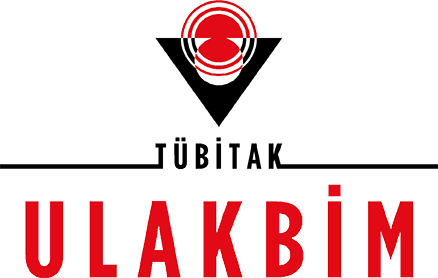Nisan 2011
- Ana Sayfa
- Sayılar
- Nisan 2011
- Klatskin tumor presented with melena and jaundice: interesting case with hemobilia
Nisan 2011 / (19 - 1)
Klatskin tumor presented with melena and jaundice: interesting case with hemobilia
Sayfa Numaraları
30-32
Yazarlar
Diğdem ÖZER ETİK, Öykü Tayfur YÜREKLİ, Bülent ÖDEMİŞ, Selçuk DİŞİBEYAZ, Erkan PARLAK
Kurumlar
Department of Gastroenterology, Türkiye Yüksek İhtisas Hospital, Ankara
Özet
Hemobilia bleeding into the biliary tree is an unusual cause of upper gastrointestinal bleeding. Generally, etiologies of hemobilia are iatrogenic or traumatic in origin. Cholangiocarcinoma is a rare gastrointestinal tumor that can become evident with hemobilia. We present a 77-year-old female with a history of warfarin use, who suffered from a protracted course of melena and jaundice.
Anahtar Kelimeler
Hemobilia, warfarin, cholangiocarcinoma
Giriş
Hemobilia is quite a rare cause of upper gastrointestinal system bleeding. This definition relating to the presence of bleeding within the biliary system was used for the first time by Sandblom in 1948 (1). The majority of the hemobilia cases report iatrogenic trauma history including random trauma or liver biopsies relating to the hepatobiliary system. Biliary stone diseases such as cholecystitis and cholangitis, parasitic infections of the biliary duct, liver abscess, hepatobiliary malignancies, vascular malformations or aneurysm of the hepatic artery, and coagulopathy are among other causes of hemobilia (1,2).
Cholangiocellular carcinoma, on the other hand, constitutes 2-3% of all gastrointestinal system tumors, mostly presenting with painless jaundice and itching. Hemobilia may also occur following endoscopic interventions including drainage into the biliary system or secondary to hepatic arterial fistulas or aneurysms that develop after local therapies in cholangiocellular carcinoma (3,4). We herein present a case using warfarin who was diagnosed with non-traumatic hemobilia and malignant hilar stenosis at the time of her presentation with melena.
Cholangiocellular carcinoma, on the other hand, constitutes 2-3% of all gastrointestinal system tumors, mostly presenting with painless jaundice and itching. Hemobilia may also occur following endoscopic interventions including drainage into the biliary system or secondary to hepatic arterial fistulas or aneurysms that develop after local therapies in cholangiocellular carcinoma (3,4). We herein present a case using warfarin who was diagnosed with non-traumatic hemobilia and malignant hilar stenosis at the time of her presentation with melena.
Olgu
In geriatric patients, there is an elevated risk of gastrointestinal bleeding due to intensive use of anti-aggregates and anticoagulants against cardiac comorbidities. However, peptic ulcer conditions rank first in the etiology of all upper gastrointestinal system bleedings independent of age (5). However, in this case, who applied with melena and reported use of warfarin, the endoscopic examination revealed no esophago-gastroduodenal pathology. Her physical examination indicated icterus with elevated cholestasis parameters, which led us to consider a possible hemobilia. An insisted and thorough examination by the endoscopist revealed bleeding from the major papilla. The classic hemobilia triad comprises upper gastrointestinal bleeding, upper abdominal pain and jaundice (3). The most remarkable symptom of these three is hematemesis or melena, and the rarest jaundice. Prevalence of all three aspects of the classic triad is 22%. Bismuth categorized causes of hemobilia in 1973 according to the etiology with relevance to the liver by 53%, gall bladder by 23%, biliary duct by 22%, and pancreas by 2% (3,4). Abdominal USG indicates an obstruction in the bile duct, with an abrupt termination of the choledochus at the proximal end with tissue echogenicity. Cholangiocellular carcinomas are gastrointestinal tumors with poor prognosis that are generally detected at an advanced stage. For this particular patient, use of anticoagulants facilitated bleeding in the tumor-infiltrated biliary system. The purpose of hemobilia treatment is to stop the bleeding and remove the biliary obstruction. For this purpose, angiographic transarterial embolization and biliary drainage with ERCP are recommended. The surgical method is only recommended when these methods are inapplicable or when they fail (6). Stenting with ERCP and nasobiliary drainage helped control the bleeding in this patient.
In conclusion, presence of jaundice accompanying melena should raise suspicion regarding the presence of hemobilia. Patients should also be examined for non-traumatic biliary diseases such as iatrogenic, traumatic, inşammatory, and parasitic conditions or malignancies.
In conclusion, presence of jaundice accompanying melena should raise suspicion regarding the presence of hemobilia. Patients should also be examined for non-traumatic biliary diseases such as iatrogenic, traumatic, inşammatory, and parasitic conditions or malignancies.
Tartışma
In geriatric patients, there is an elevated risk of gastrointestinal bleeding due to intensive use of anti-aggregates and anticoagulants against cardiac comorbidities. However, peptic ulcer conditions rank first in the etiology of all upper gastrointestinal system bleedings independent of age (5). However, in this case, who applied with melena and reported use of warfarin, the endoscopic examination revealed no esophago-gastroduodenal pathology. Her physical examination indicated icterus with elevated cholestasis parameters, which led us to consider a possible hemobilia. An insisted and thorough examination by the endoscopist revealed bleeding from the major papilla. The classic hemobilia triad comprises upper gastrointestinal bleeding, upper abdominal pain and jaundice (3). The most remarkable symptom of these three is hematemesis or melena, and the rarest jaundice. Prevalence of all three aspects of the classic triad is 22%. Bismuth categorized causes of hemobilia in 1973 according to the etiology with relevance to the liver by 53%, gall bladder by 23%, biliary duct by 22%, and pancreas by 2% (3,4). Abdominal USG indicates an obstruction in the bile duct, with an abrupt termination of the choledochus at the proximal end with tissue echogenicity. Cholangiocellular carcinomas are gastrointestinal tumors with poor prognosis that are generally detected at an advanced stage. For this particular patient, use of anticoagulants facilitated bleeding in the tumor-infiltrated biliary system. The purpose of hemobilia treatment is to stop the bleeding and remove the biliary obstruction. For this purpose, angiographic transarterial embolization and biliary drainage with ERCP are recommended. The surgical method is only recommended when these methods are inapplicable or when they fail (6). Stenting with ERCP and nasobiliary drainage helped control the bleeding in this patient.
In conclusion, presence of jaundice accompanying melena should raise suspicion regarding the presence of hemobilia. Patients should also be examined for non-traumatic biliary diseases such as iatrogenic, traumatic, inşammatory, and parasitic conditions or malignancies.
In conclusion, presence of jaundice accompanying melena should raise suspicion regarding the presence of hemobilia. Patients should also be examined for non-traumatic biliary diseases such as iatrogenic, traumatic, inşammatory, and parasitic conditions or malignancies.
Kaynaklar
1. Thong-Ngam D, Shusang V, Wongkusoltham P, et al. Hemobilia: four case reports and review of the literature. J Med Assoc Thai 2001; 84: 438-44.
2. Manolakis AC, Kapsoritakis AN, Tsikouras AD, et al. Hemobilia as the initial manifestation of cholangiocarcinoma in a hemophilia B patient. World J Gastroenterol 2008; 14: 4241-4.
3. Killeen RP, Torreggiani WC, Malone DE, Brophy DP. Hemobilia as a potential complication in patients treated with photodynamic therapy for unresectable cholangiocarcinoma. Gastrointest Cancer Res 2009; 3: 80.
4. Hayano K, Miura F, Amano H, et al. Arterio-biliary fistula as rare complication of chemoradiation therapy for intrahepatic cholangiocarcinoma. World J Radiol 2010; 2: 374-6.
5. Lee TC, Huang SP, Yang JY, et al. Age is not a discriminating factor for outcomes of therapeutic upper gastrointestinal endoscopy. Hepatogastroenterology 2007; 54: 1319-22.
6. Rerknimitr R, Kongkam P, Kullavanijaya P. Treatment of tumor associated hemobilia with a partially covered metallic stent. Endoscopy 2007; 39: E225.
2. Manolakis AC, Kapsoritakis AN, Tsikouras AD, et al. Hemobilia as the initial manifestation of cholangiocarcinoma in a hemophilia B patient. World J Gastroenterol 2008; 14: 4241-4.
3. Killeen RP, Torreggiani WC, Malone DE, Brophy DP. Hemobilia as a potential complication in patients treated with photodynamic therapy for unresectable cholangiocarcinoma. Gastrointest Cancer Res 2009; 3: 80.
4. Hayano K, Miura F, Amano H, et al. Arterio-biliary fistula as rare complication of chemoradiation therapy for intrahepatic cholangiocarcinoma. World J Radiol 2010; 2: 374-6.
5. Lee TC, Huang SP, Yang JY, et al. Age is not a discriminating factor for outcomes of therapeutic upper gastrointestinal endoscopy. Hepatogastroenterology 2007; 54: 1319-22.
6. Rerknimitr R, Kongkam P, Kullavanijaya P. Treatment of tumor associated hemobilia with a partially covered metallic stent. Endoscopy 2007; 39: E225.



